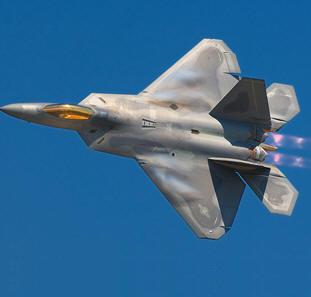|
|||||||||||||||||
|
|
|
|||
|
By Daniel Baxter |
||||
 |
March 23, 2011 - Sustainable Oils, a producer of
renewable, low carbon and domestically made fuels,
announced jet fuel derived from its camelina powered the
successful test flight of a U.S. Air Force F-22 Raptor
aircraft. The aircraft was powered by a 50/50 fuel blend
of conventional petroleum-based JP-8 and biofuel derived
from camelina.
"The F-22 flew on Friday, and performed flawlessly on
the biofuel blend citing no noticeable differences from
traditional JP-8," said Jeff Braun, director of the
Alternative Fuels Certification Division, part of the According to the U.S. Air Force, the flight test ?consisted of air starts, operability, and performance at different speeds and altitude throughout the flight envelope. The F-22 Raptor performed several maneuvers including a supercruise at 40,000 ft. reaching speeds of 1.5 Mach. Supercruise is supersonic flight without using the engine's afterburner.? |
|||
|
To date,
Sustainable Oils has contracted for more than 500,000 gallons of
camelina-based biofuel with the U.S. Air Force, Navy, and Army.
Fuels derived from camelina have been the most thoroughly tested
of all aviation biofuels. They have successfully powered a
variety of aircraft, including commercial airlines (
?Camelina-based
jet fuel is ready for liftoff,? said Scott Johnson, President of
Sustainable Oils. ?As this most recent test demonstrates, it
needs no additional research, development or technology. It
actually adds to the food chain, and dramatically reduces the
carbon footprint of the fuel.?
Although it is a plant, camelina does not compete with crops grown for food. Rather, it grows well in rotation with wheat and on non-irrigated land. Given its high protein content and Omega 3 fatty acids, its ?meal? (what is left after oil extraction from the seed) has been approved by the USDA for livestock and poultry feed, thus adding to the food chain.
A |
||||
|
The US State of
Montana has recently been growing more and more camelina for its
potential as a biofuel and bio-lubricant. Plant scientists at the
The US Air Force
also began testing the fuel in its aircraft in March 2010.
Camelina has been
approved as a cattle feed supplement in the Camelina meal is the by-product of camelina when the oil has been extracted. Camelina meal has significant crude protein content. "Feeding camelina meal significantly increased (p < 0.01) omega-3 [fatty acid] concentration in both breast and thigh meat [of turkeys] compared to control group." Medical research indicates that a diet abundant in omega-3 fatty acids is beneficial to human health. |
|
|
| ?AvStop
Online Magazine
Contact
Us
Return To News
|
|

